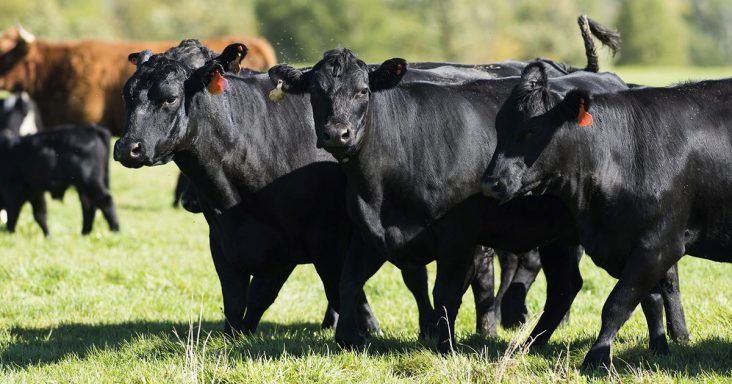Walmart tries again to improve beef offering in stores
by September 6, 2022 4:55 pm 2,161 views

Walmart has over the years made several attempts to improve the beef quality it sells. Last week, the retail giant invested a minority stake in Sustainable Beef, a rancher and beef producer-owned company that sells Angus beef into retail.
Walmart did not disclose the amount of the investment but said the deal will increase the amount of quality Angus beef it sells.
“Fresh groceries are a growth driver for the retailer,” said Tyler Lehr, senior vice president of merchandising for deli services, meat and seafood for Walmart U.S.
The deal calls for Sustainable Beef to open a processing center in North Platte, Neb. They will break ground next month and create about 800 jobs in that community. Lehr said Walmart will get a majority of the beef produced at the new facility which is expected to open in late 2024. With the investment, Walmart also gets a board seat at Sustainable Beef.
Walmart said the deal will allow for a more consistent supply of beef, including better cuts such as rib-eye and New York Strip. The beef sourced from Sustainable is expected to make its way into stores in the central U.S. by late next year.
This venture follows another beef investment Walmart made in 2020 as it opened a beef processing facility for Angus beef in Thomasville, Ga. That facility is operated by FPL Foods and employs about 200. Walmart has not said how much beef it sells to the public, but with 4,700 stores, the retail giant is the largest grocery chain in the U.S. by overall sales. Grocery also accounts for almost 60% of the retailer’s U.S. revenue, or roughly $235 billion last year on food and consumable groceries.
Analysts also said the Sustainable Beef deal also plays well with Walmart’s environmental and social commitments. By 2030, Walmart and its foundation have pledged to protect, restore or more sustainably manage at least 50 million acres of land and 1 million square miles of ocean by 2030. In 2020, Walmart said it would also work toward sourcing more sustainable fresh beef by working with ranchers on grazing management, grain sourcing and more.
“Customers continue to tell us one of the biggest points of differentiation is they want to know where their food comes from,” Lehr said. “They like to know and learn a little bit more about it rather than just seeing it on the meat counter. There’s a greater drive and desire for them to know what the backstory is on the products that they’re purchasing in store.”
With food inflation topping nearly 13% this summer, Walmart said its biggest market share gains have been in grocery and essentials as the retailer tried to avoid price increases. In the recent quarterly results, Walmart said roughly 75% of the market share gains in foods have come from households with incomes above $100,000.
While chicken prices are up almost 30% from a year ago, beef prices have risen an average of 6.9% year over year. Retail boneless breast prices this week average $3.67 per pound, up 28.9% from the same week a year ago, according to the U.S. Department of Agriculture National Retail Report for the period ending Aug. 8. USDA reported average advertised retail prices for bone-in ribeye steak was $8.23 per pound this week, compared to $8.42 a year ago. T-bone cuts averaged $7.30 per pound this week at retail, up from $6.66 a year ago. New York strip cuts are selling for an average retail price of $10.63 per pound this week, up from $9.39 a year ago.
